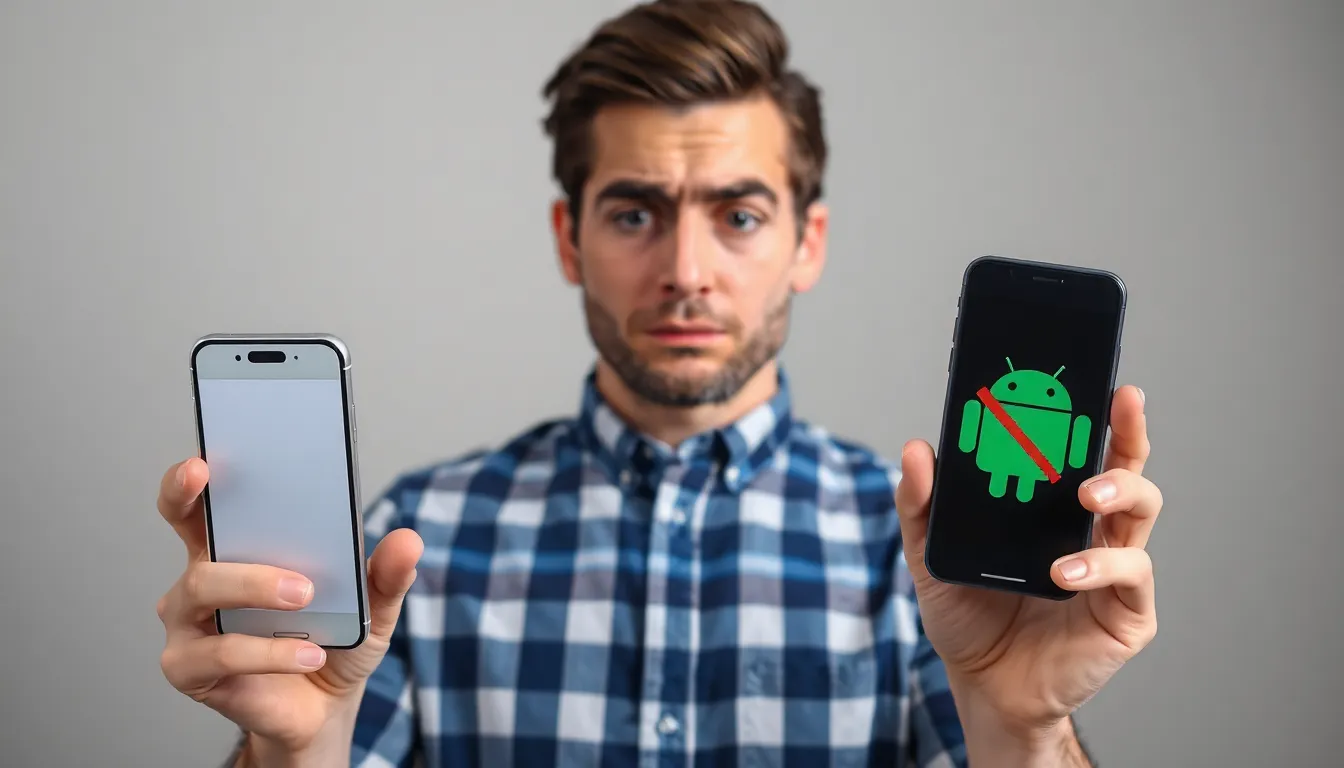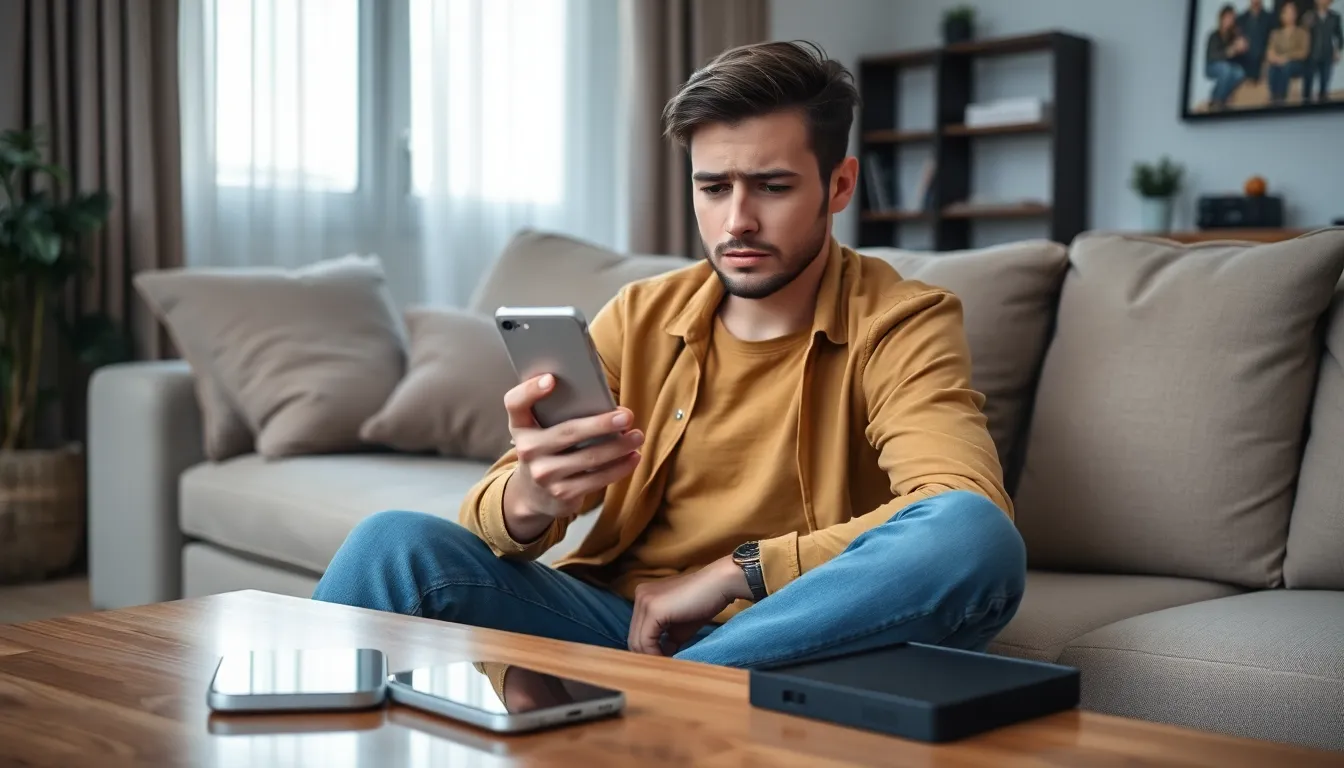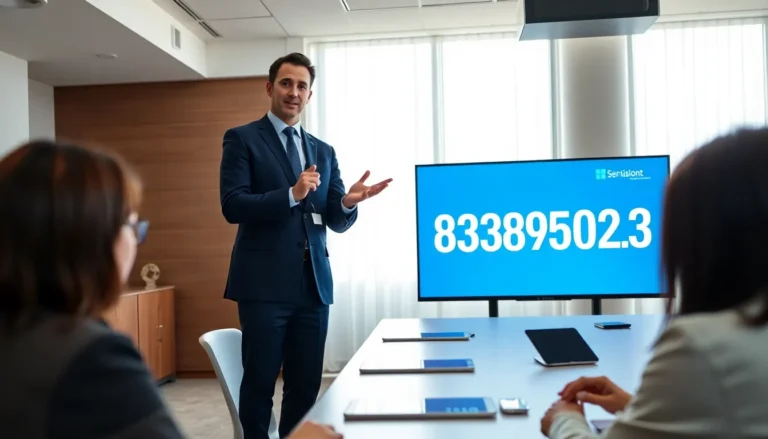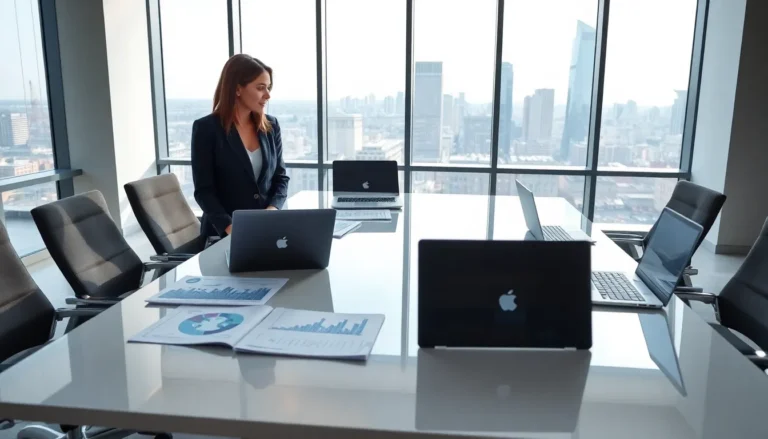Imagine this: you’re trying to text your friend with an Android phone, but your iPhone suddenly decides it’s time to play hard to get. What’s going on? Is your phone having a bad day, or is there more to this digital drama? When iPhones block Android devices, it’s not just a tech hiccup; it’s a clash of ecosystems that can leave users scratching their heads and laughing at the absurdity of it all.
In a world where blue bubbles and green bubbles reign supreme, the rivalry between iPhone and Android users can spark some serious confusion. From missed messages to unexpected app limitations, understanding what happens when an iPhone blocks an Android is key to navigating these tech waters. Buckle up as we dive into the quirks of this smartphone saga and uncover the reasons behind this modern-day communication conundrum.
Table of Contents
ToggleOverview Of Blocking Mechanisms
Blocking mechanisms between iPhones and Android devices primarily occur during messaging. Text messages sent from iPhones to Android devices often rely on different protocols, which can lead to failures in message delivery. Apple’s iMessage system uses internet-based protocols, while Android mostly uses SMS and MMS. This difference causes communication gaps.
When iPhones block Android devices, the sender may notice blue message bubbles turning green, indicating a shift from iMessage to SMS. A shift to green bubbles can signify potential limitations in functionality, such as missing features like read receipts or typing indicators. Many users believe these color distinctions symbolize rivalry, deepening the gap between the two ecosystems.
Blocking also stems from user settings and network factors. Users can intentionally block contacts on their iPhones, preventing any communication from those Android numbers. Additionally, network issues like poor signal strength can disrupt message transmission from iPhones to Android devices. Notably, iPhones may also restrict certain features like sending high-resolution images or videos to Android users due to format differences.
Technical problems arise further when transitioning from one platform to another. Misconfigured settings or differences in software updates can impact message delivery. If an iPhone user prefers seamless interaction, understanding these mechanisms proves crucial. Users should recognize how these systems interact, as their reliance on specific technologies influences communication quality.
How iPhone Blocks Android Devices

Blocking between iPhone and Android devices involves several factors that hinder seamless communication. Understanding these factors provides insight into the frustrations users experience.
Reasons For Blocking
Intentional blocking occurs when iPhone users choose to restrict contacts, including those with Android devices. User settings allow for specific numbers to be blocked, leading to communication failures. Additionally, network issues like weak signals can disrupt text messages between these platforms. Even accidental blocking can happen due to a misconfiguration or user error. Unlike other platforms, iPhones prominently display blocking options, making it easy for users to manage their contacts.
Technical Implementation
Technical differences between messaging protocols cause significant blocking issues. iPhones utilize iMessage, an internet-based service, while Android devices mainly rely on SMS and MMS. This difference in frameworks creates compatibility challenges, particularly noted when message formats fail to align. When messages switch from blue to green bubbles, the transition signals an immediate change in delivery protocols. Users may also encounter limitations on features such as group messages or media sharing, which further complicates interactions across platforms.
Consequences For Users
Users experience distinct consequences when an iPhone blocks an Android device, primarily affecting messaging and call functionalities.
Messaging Limitations
Messaging faces significant limitations across platforms. Users can’t rely on iMessage features when communication shifts from blue to green bubbles. Read receipts and typing indicators become unavailable, diminishing the interactive experience. Text format discrepancies can lead to media files not displaying correctly or at all. Group chats that include both iPhone and Android contacts often encounter disruptions, resulting in unreceived messages or mixed conversations. Users may feel frustrated, as these constraints hinder seamless communication, making it crucial to be aware of compatibility issues.
Call Functionality Issues
Call functionality also suffers between iPhone and Android users. Users may experience difficulties connecting calls, particularly if one party blocks the other. Voicemail often doesn’t sync across devices, leading to missed messages that remain unaddressed. Furthermore, discrepancies in contact storage can result in confusion, particularly for blocked contacts. Voice and video quality might differ based on network compatibility, affecting overall communication. User frustration can escalate, underscoring the need for awareness of these technical barriers in cross-platform interactions.
User Experience And Feedback
User responses to iPhone blocking Android vary widely. Many express frustration when messages fail to deliver, noticing the switch from blue to green bubbles. Confusion arises when features like read receipts and typing indicators vanish, leaving users uncertain if their messages were received.
Some individuals report difficulties with group chats. Such mixed conversations involving both iPhone and Android users often lead to unreceived messages. Participants experience interruptions that can disrupt communication flow, creating annoyance and miscommunication.
In personal interactions, the impact of blocking is noticeable. When an iPhone user blocks an Android contact, it complicates voice and video calls. Variations in connection quality and missed calls create barriers that hinder effective communication.
Feedback regarding media sharing often highlights frustrations too. Users find it challenging to send high-resolution images or videos, given the incompatibility of formats between iPhones and Android devices. This limitation can discourage sharing important moments, affecting the overall user experience.
Concerns regarding voicemail synchronization also emerge frequently. Users note missing messages when experiencing blocking issues between devices. Differences in contact management lead to confusion, as blocked contacts may inadvertently remain on user lists without clear indication.
Overall, the user experience with iPhone blocking Android emphasizes significant gaps in messaging, calling, and media sharing capabilities. Acknowledging these barriers helps users navigate interactions across platforms more effectively.
The complexities of iPhone blocking Android devices highlight the ongoing rivalry between these two smartphone ecosystems. Users often face significant challenges in messaging and calling functionalities that can lead to frustration and confusion. The shift from blue to green message bubbles serves as a clear indicator of these limitations, affecting everything from media sharing to group chats.
Understanding the technical barriers and user settings that contribute to these issues is essential for navigating cross-platform communication effectively. By recognizing the differences in messaging protocols and the implications of blocking, users can better manage their interactions and expectations in an increasingly interconnected digital world.




